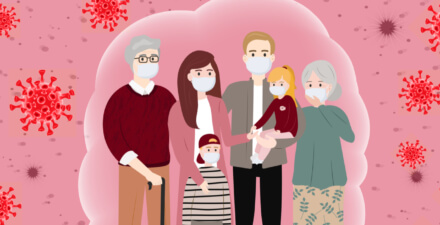Achieving universal paid family and medical leave in the United States

The coronavirus pandemic and the recession it caused lay bare a familiar challenge for U.S. workers—balancing family and job responsibilities without access to paid family and medical leave. When a new child arrives, loved ones get sick, or a serious illness strikes, people need time away from work. But even at these times of joy or stress, bills and expenses will keep coming, and families must find a way to cope with financial uncertainty. While some workers can count on their employers to provide them with paid leave, it is rare: Only 18 percent of private-sector workers have paid family leave and 44 percent have paid personal leave through their jobs. Access to these benefits drops precipitously for lower-income and part-time workers.
This is not a new challenge, but it is often one that families deal with individually—with every household forced to patch together solutions as best they can.
The Families First Coronavirus Response Act, passed in March 2020, provided some private-sector workers with access to federal paid leave benefits for the first time, but the program fell far short of satisfying the needs of the workforce. In 2021, policymakers should prioritize the establishment of a national and permanent paid family and medical leave social insurance system. Evidence from states that already guarantee access to paid leave also suggests positive human capital and economic outcomes for families and the broader economy without meaningful negative effects on employers. Inclusive eligibility requirements, progressive wage-replacement structures, robust job protections, and leave lengths that meets the needs of workers and their families are all important policy design elements to consider in fashioning a paid family and medical leave program that meets the needs of the diverse workforce of the United States.
Key resources
“Vision 2020: The economic imperative of enacting paid family leave across the United States,” by Maya Rossin-Slater and Jenna Stearns
This essay examines paid family leave programs at the state and local level, which are helping to set the stage for a federal paid leave program. The authors then describe the current research on the impacts of paid family leave on workers, children, and employers, with an eye toward understanding the economic costs and benefits of a potential federal program and the key policy levers to consider. The authors also briefly discuss how paid family leave may relate to the growth in economic inequality in America and whether a federal policy could help curb this trend. While paid leave can cover both bonding with a new child and caring for other relatives, in this essay, the authors primarily focus on the effects of bonding leave.
“What does the research say about the FAMILY Act provisions?” by Equitable Growth
This factsheet summarizes the state of research on major paid leave policy issues by looking at the FAMILY Act, one of the most prominent, comprehensive paid leave bills introduced in the U.S. Congress. It summarizes studies on reasons for implementing paid leave, the definition of family members, the length of leave, wage replacement levels during leave, and job protection during leave.
“Paid medical leave research: What do we know and what do we need to know to improve health and economic well-being in the United States,” by Jack Smalligan and Chantel Boyens
Paid time off to address one’s own medical condition is the most frequently used type of paid leave, yet it has received far less attention in the policy debate and research. In this report, Smalligan and Boyens aim to inform future research by first providing background on what paid medical leave is and highlighting important features that make it distinct from parental and family caregiving. They then describe what is known about the expected impact of paid medical leave and the ways in which it could be expected to affect economic and health outcomes, including effects on individuals, public health, employers, and the U.S. economy. Paid medical leave could improve economic outcomes by reducing income volatility, helping workers to return to employment, improving productivity, and supporting labor force participation. Paid medical leave may also have positive effects on health outcomes by improving health management, encouraging earlier treatment, and reducing financial stress.
“Paid family care leave: A missing piece in the U.S. social insurance system,” by Jane Waldfogel and Emma Liebman
Leave to care for a family member with a serious illness, whether that be a spouse, domestic partner, child, parent, or other relative, is more widespread and more frequent than it is for the other types of family leave. In contrast to other types of leave—in particular, parental leave, which has been studied extensively—family care leave receives much less attention in existing research. Its inclusion in policy proposals is also uneven. This paper focuses on reviewing what we know and do not know about family care leave. This paper contributes to an understanding of the need for paid leave to care for a seriously ill family member and the current state of policy and research. Considering the evidence, Waldfogel and Liebman offer implications for policy and future research.
Top experts
- Alix Gould-Werth, director of family economic security policy, Washington Center for Equitable Growth
- Maya Rossin-Slater, assistant professor, Stanford University School of Medicine
- Jane Waldfogel, Compton Foundation Centennial professor for the prevention of children’s and youth problems, Columbia University School of Social Work
- Jack Smalligan, senior policy fellow in the Income and Benefits Policy Center, Urban Institute
- Chantel Boyens, principal policy associate in the Income and Benefits Policy Center, Urban Institute
- Tanya Byker, assistant professor, Middlebury College
- Christopher Ruhm, professor, University of Virginia
To view the other policy sheets in this series, please click here.







